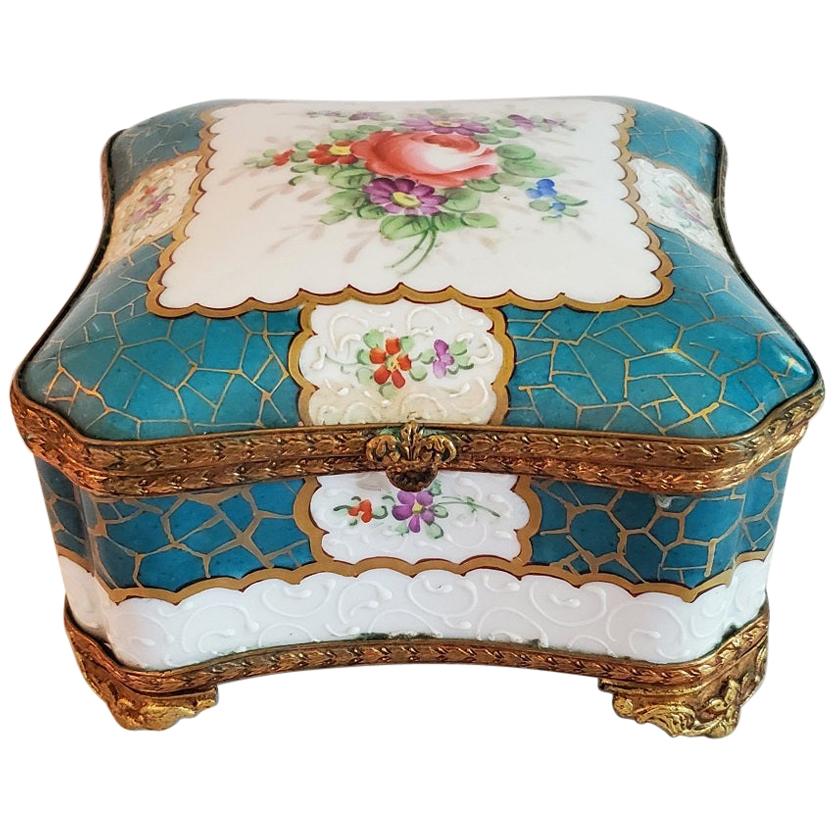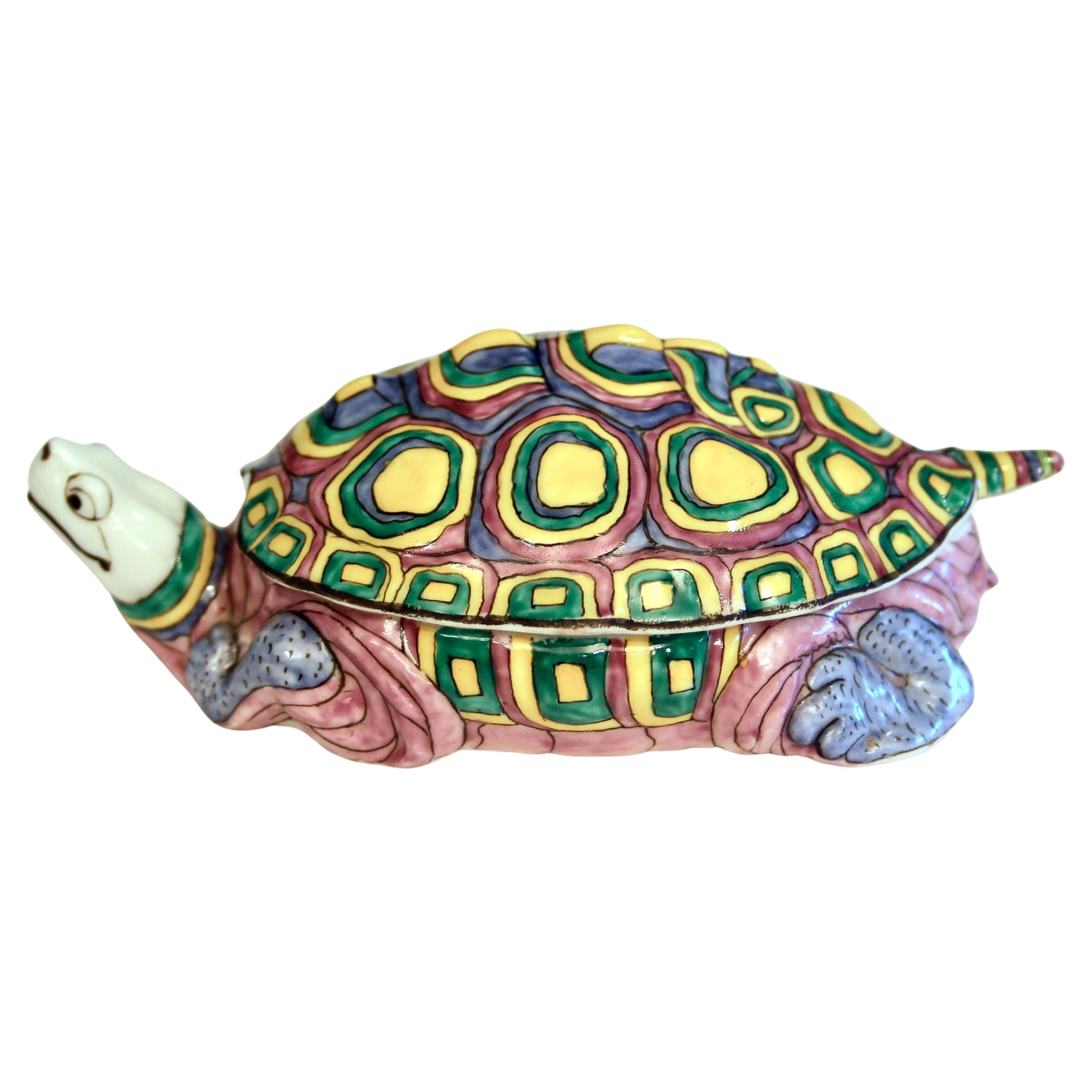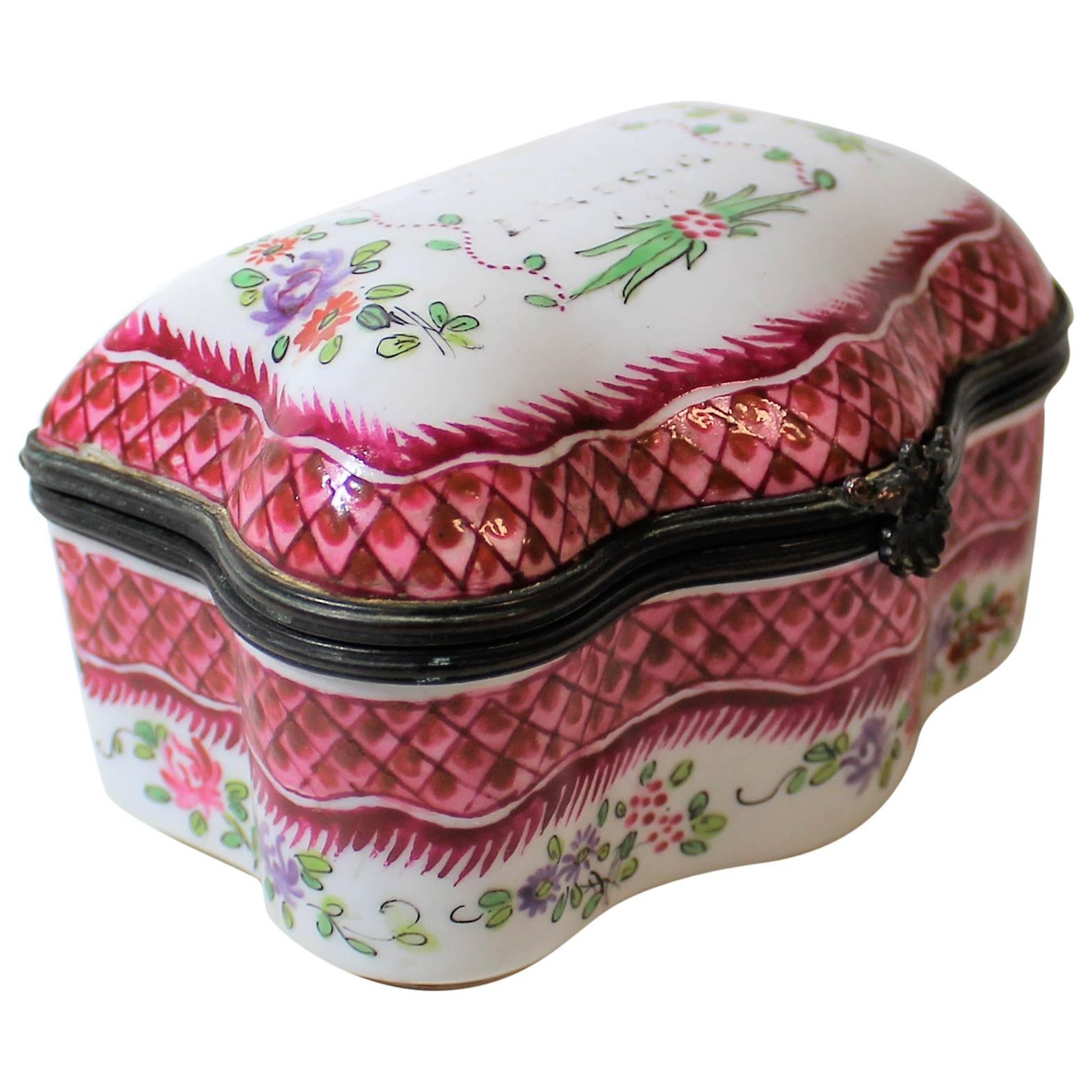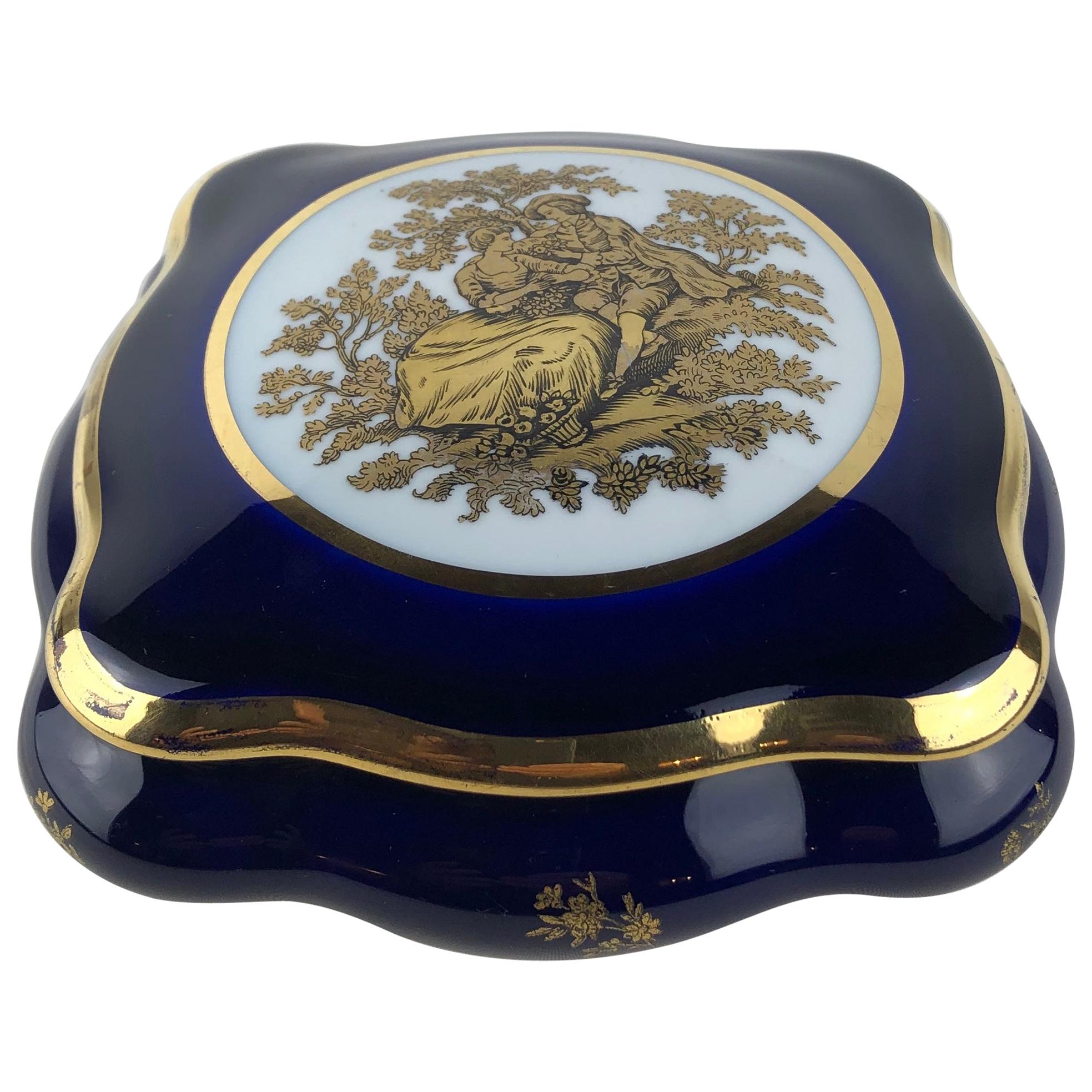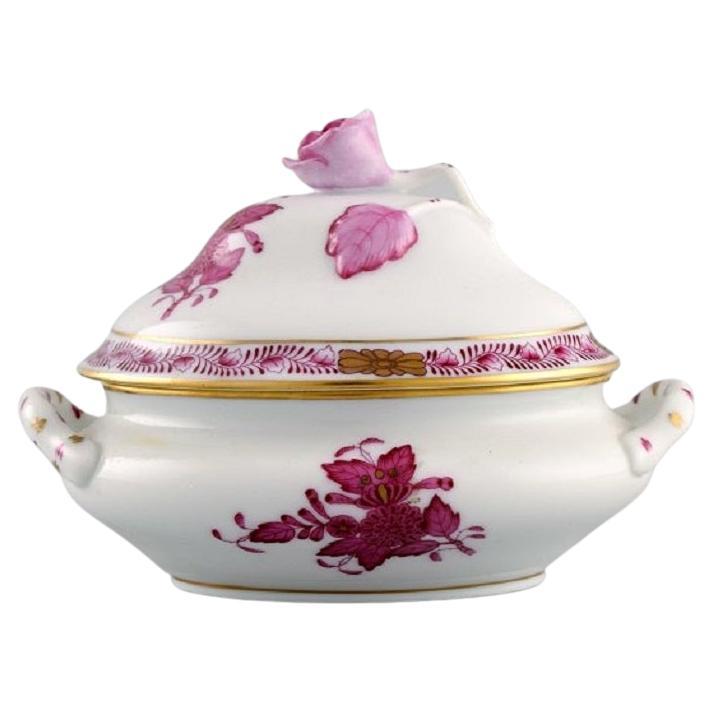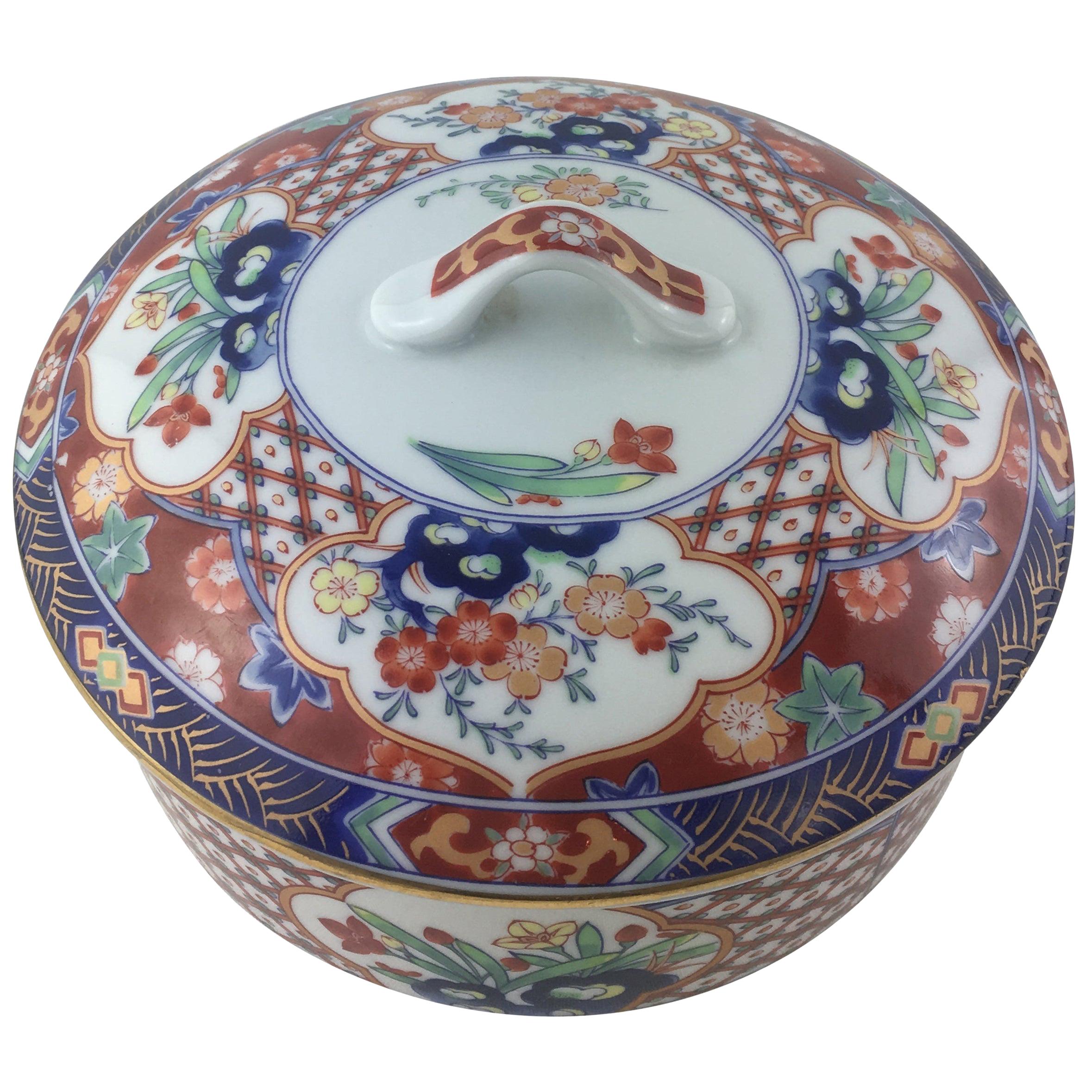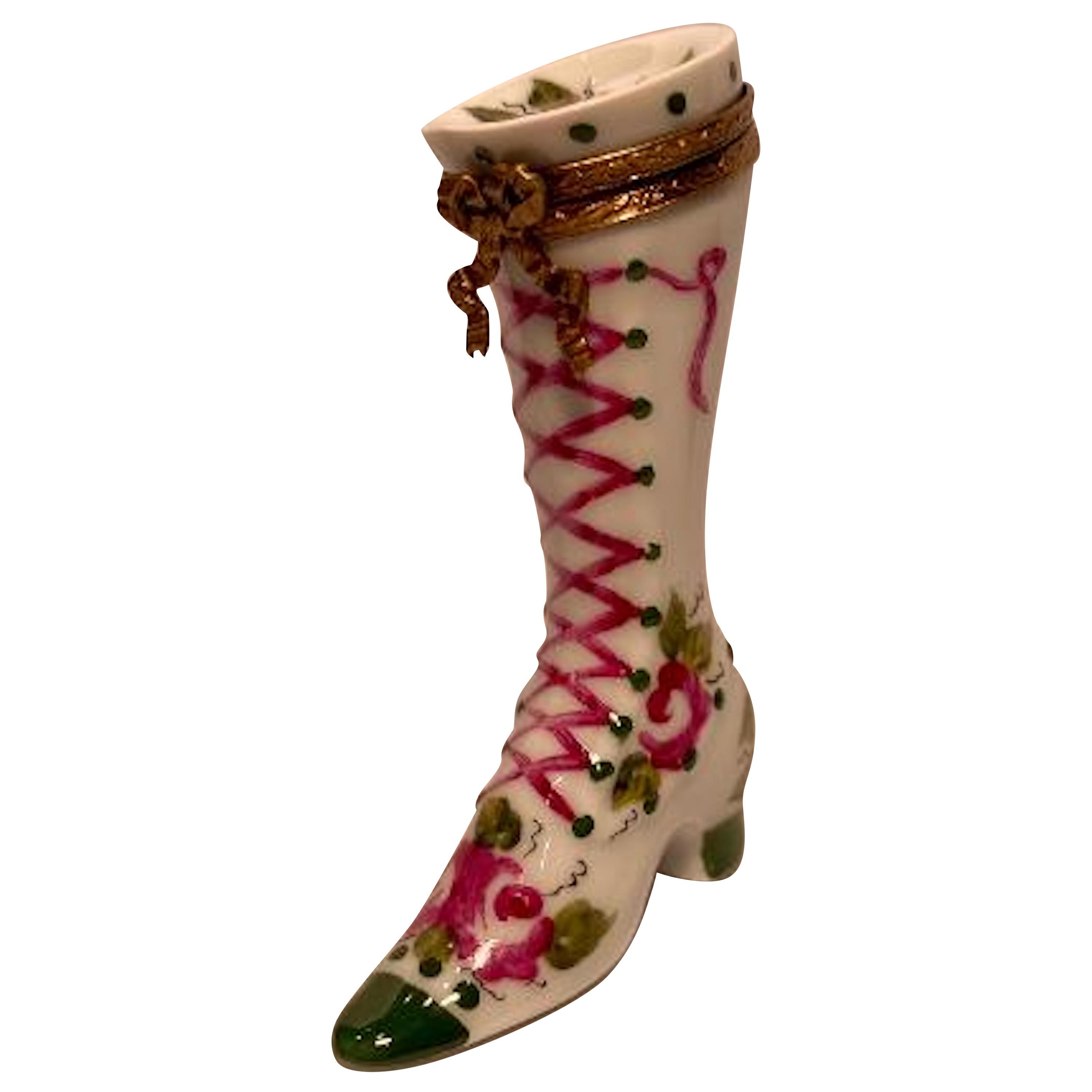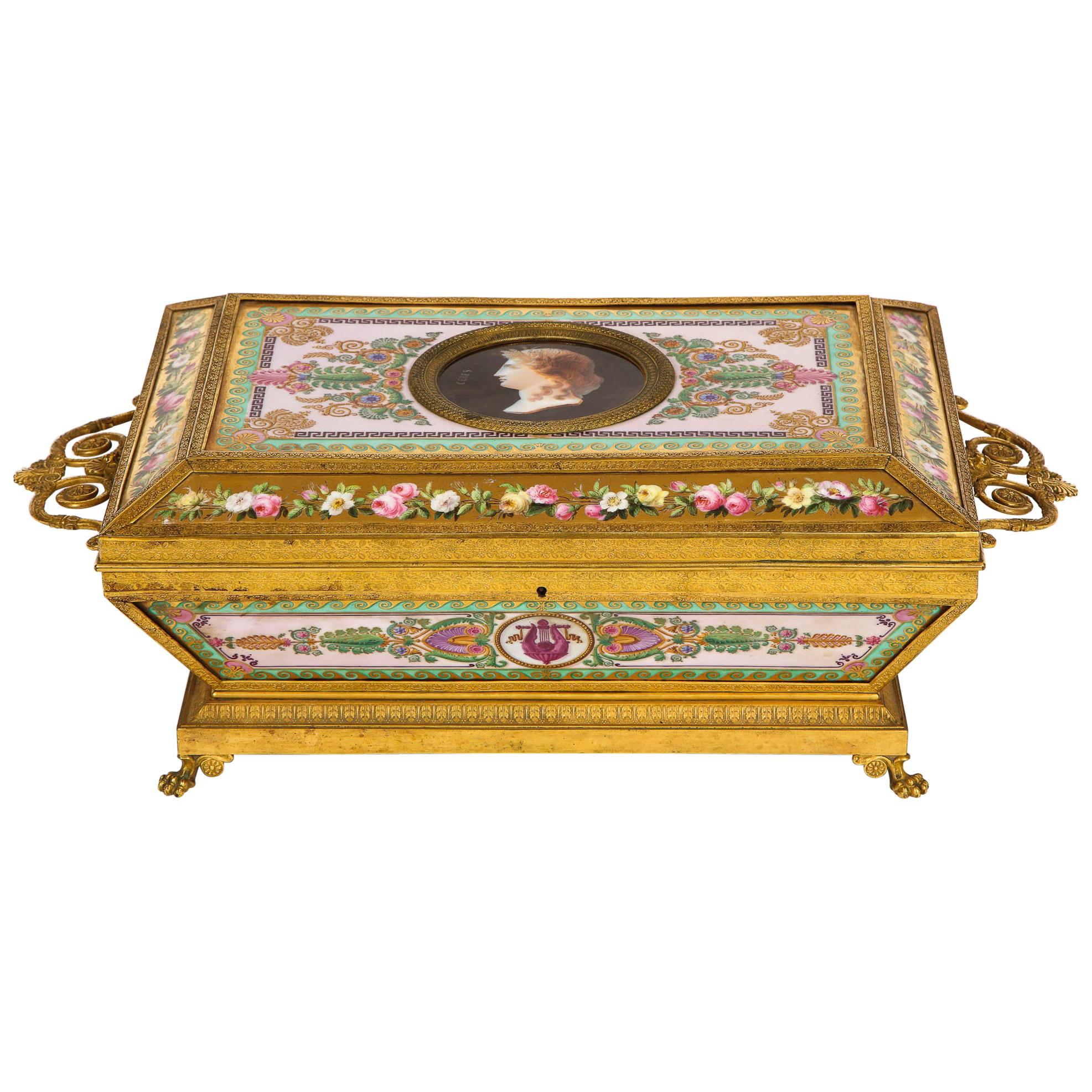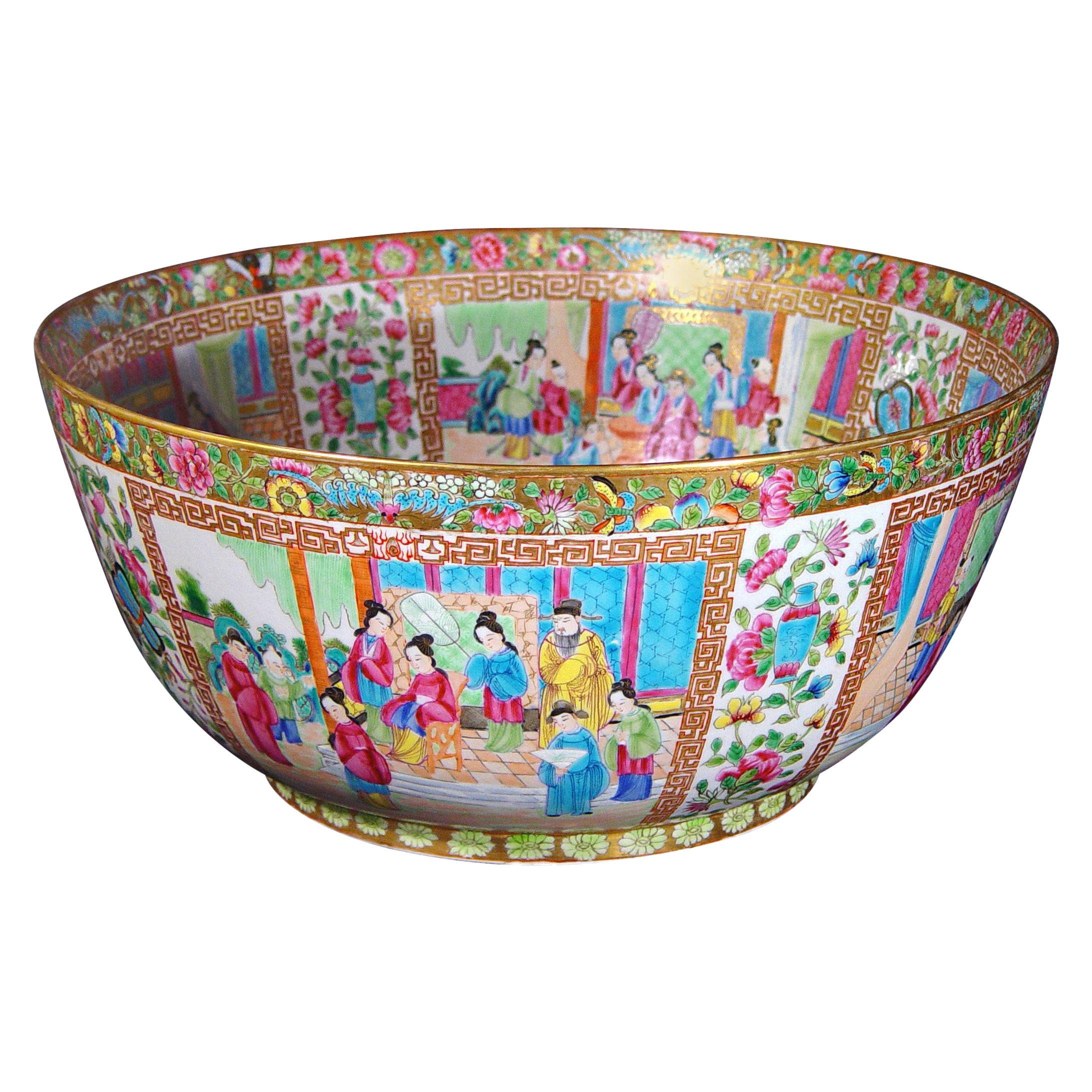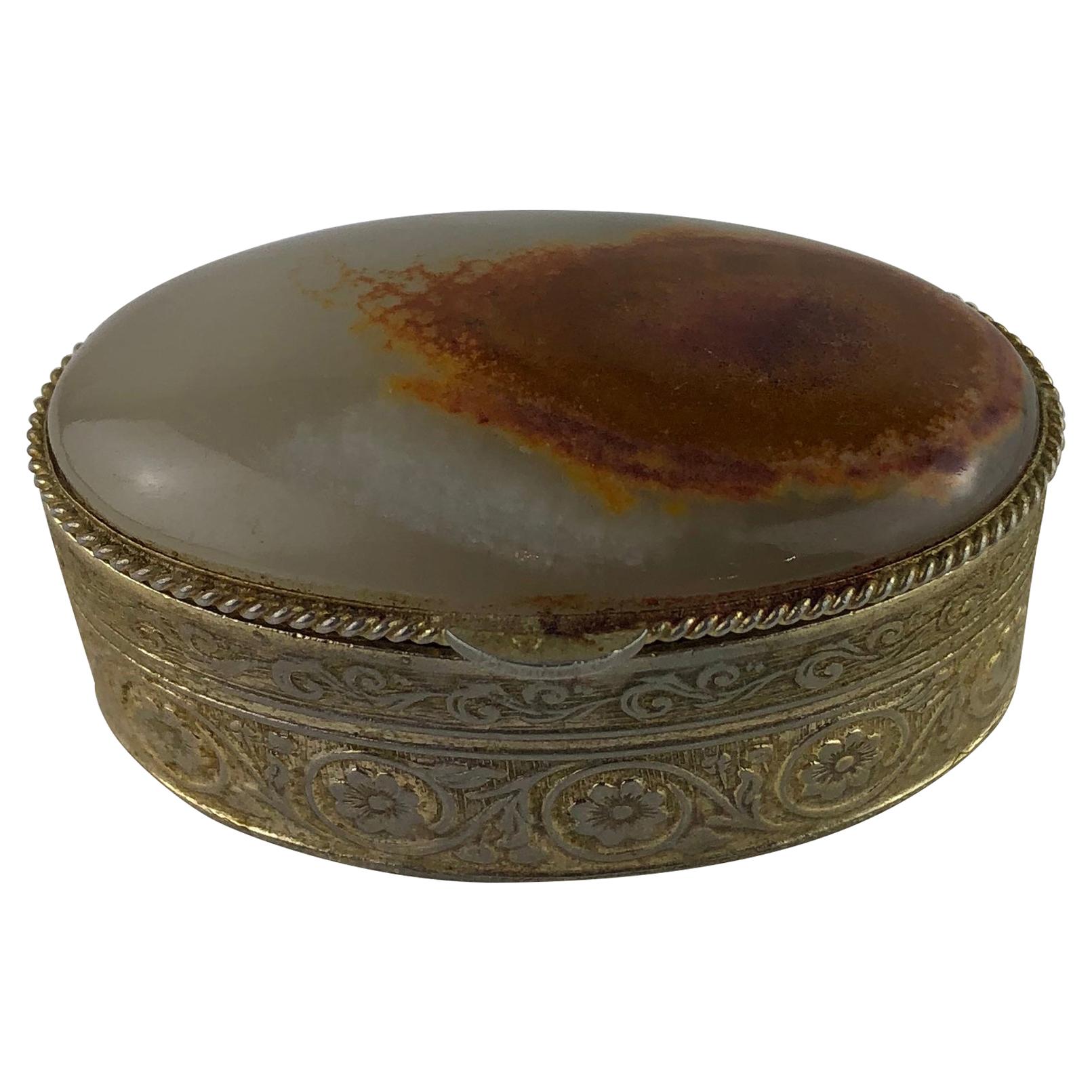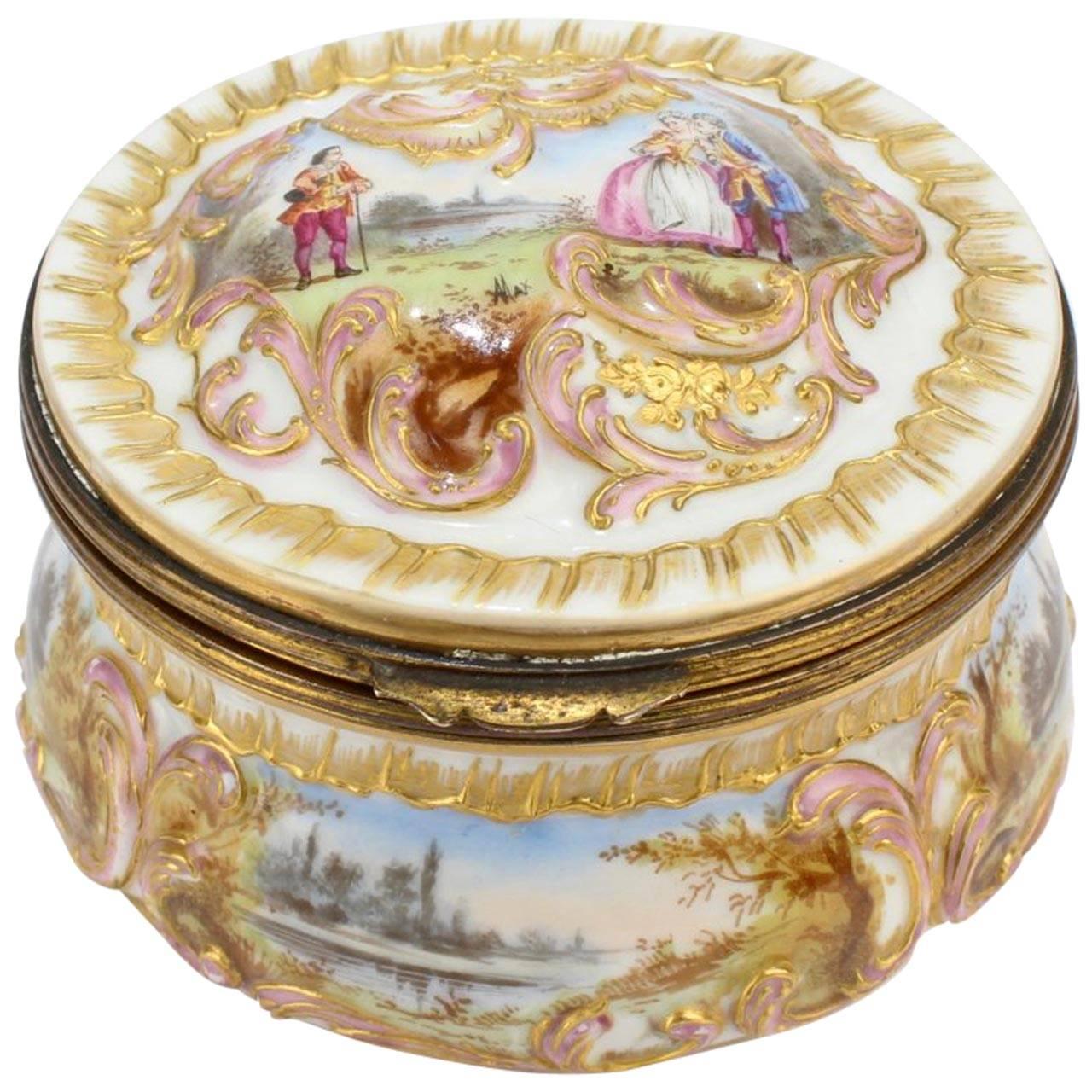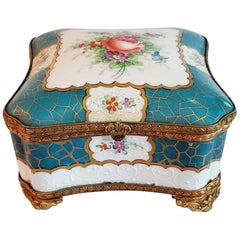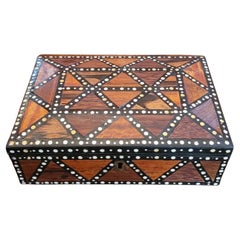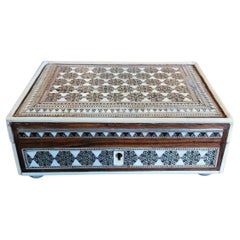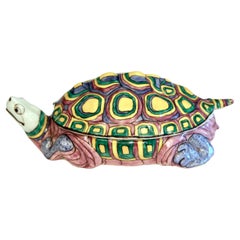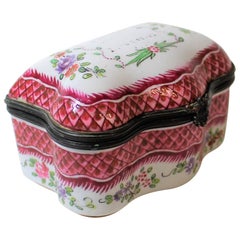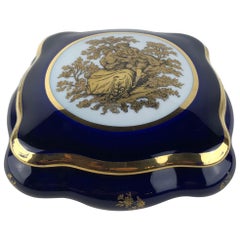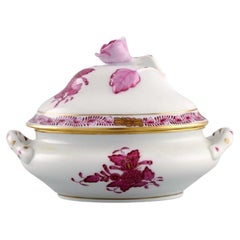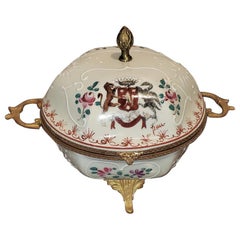
Samson Paris Signed Porcelain Trinket Box
View Similar Items
Want more images or videos?
Request additional images or videos from the seller
1 of 13
Samson Paris Signed Porcelain Trinket Box
Price:$500
$680List Price
About the Item
- Creator:Edmé Samson (Maker)
- Dimensions:Height: 5.25 in (13.34 cm)Width: 7 in (17.78 cm)Depth: 5 in (12.7 cm)
- Style:Baroque (In the Style Of)
- Materials and Techniques:
- Place of Origin:
- Period:
- Date of Manufacture:1900-1920
- Condition:Wear consistent with age and use. Very Good original condition with no cracks or chips. Colors still vibrant and lid hinge is only very slightly loose.
- Seller Location:Dallas, TX
- Reference Number:1stDibs: LU3978120547312
About the Seller
4.9
Vetted Professional Seller
Every seller passes strict standards for authenticity and reliability
Established in 2015
1stDibs seller since 2018
390 sales on 1stDibs
Typical response time: 2 hours
Authenticity Guarantee
In the unlikely event there’s an issue with an item’s authenticity, contact us within 1 year for a full refund. DetailsMoney-Back Guarantee
If your item is not as described, is damaged in transit, or does not arrive, contact us within 7 days for a full refund. Details24-Hour Cancellation
You have a 24-hour grace period in which to reconsider your purchase, with no questions asked.Vetted Professional Sellers
Our world-class sellers must adhere to strict standards for service and quality, maintaining the integrity of our listings.Price-Match Guarantee
If you find that a seller listed the same item for a lower price elsewhere, we’ll match it.Trusted Global Delivery
Our best-in-class carrier network provides specialized shipping options worldwide, including custom delivery.More From This Seller
View All19th Century Samson Paris Porcelain Trinket Box
By Samson & Cie
Located in Dallas, TX
Presenting a gorgeous French 19th century Samson Paris Porcelain Trinket Box probably by Edme Samson.
Marked on the base with “Made in France” and unmistakably in the style and manner of Samson.
The lid features hand painted floral bouquets on an ivory porcelain background with gold edging, surrounded by a sky blue lid with gold web or crackling effect.. The lid is hinged and the lid and base are edged in floral gilt metal mounts with Fleur De Lis clasp. It sits on 4 gilt metal or ormolu feet. The sides are likewise hand decorated.
This wonderful antique hand painted box is just bursting with History. Inspired by Edme Samson of Samson & Co., Paris. we believe (based upon the markings and natural aging) that it was made between 1880– 1890 in France and was meant to resemble an antique of a much earlier period. It is very similar to Sevres pieces with it’s color, decoration and design.
Samson specialized in reproducing antiques from the 1600 and 1700s. One of his most interesting works was his Heraldic or Armorial pieces. With this medium sized box, he was not only copying the larger porcelain caskets or coffin boxes...
Category
Antique Late 19th Century French Louis XVI Jewelry Boxes
Materials
Ormolu
19C Anglo Ceylonese Specimen Wood Trinket Box
Located in Dallas, TX
PRESENTING A BEAUTIFUL and RARE 19C Anglo Ceylonese Specimen Wood Trinket Box.
Made in ‘Galle’, Ceylon (now Sri Lanka) circa 1860-80.
Made for the ex...
Category
Antique 19th Century Sri Lankan Anglo-Indian Jewelry Boxes
Materials
Bone, Hardwood, Ebony, Sandalwood
Wedgwood Jasperware Pale Blue Lidded Heart Trinket Box
By Wedgwood
Located in Dallas, TX
PRESENTING A LOVELY Wedgwood Jasperware Pale Blue Lidded Heart Trinket Box.
Made by Wedgwood in England circa 1960 and fully and properly marked/sta...
Category
Mid-20th Century English Neoclassical Revival Jewelry Boxes
Materials
Ceramic
19C Anglo Indian Bombay MOP Sadeli Mosaic Trinket Box
Located in Dallas, TX
PRESENTING a LOVELY 19C Anglo Indian Bombay MOP (Mother of Pearl) Sadeli Mosaic Trinket Box from circa 1875-85.
Gorgeously detailed and hand-crafted ‘sadeli mosaic’ inlay, from the Bombay Area, with deep greens with silver, pewter, mother of pearl, bone and ebony in geometric patterns.
The box case, is made of sandalwood but completely covered in MOP, bone, faux ivory, ebony and mosaic inlay.
Edged with faux ivory and banded with a different pattern of sadeli mosaic.
Some minor damage to the top (repair is obvious in pics) and ivorine replacements to some edging, but it still a BEAUTIFUL BOX and of real QUALITY!
The mosaic work is FABULOUS!
Box opens to reveal its original blue velvet lining.
It sits on 4 (recently added) silvered button feet.
SADELI MOSAIC: “Anglo Indian boxes were made in India for the English residents from the early part of the 18th century. They were brought back or sent back to England usually by the people who had commissioned them. From the beginning of the nineteenth century they were imported more commercially, although not in any significant numbers until the middle decades. They were very highly valued, especially the early ones, to the extent that the designs were copied on late 19th and early 20th century tins.
The ancient art of Sadeli Mosaic is said to have been introduced from Shiraz in Persia via Sind to Bombay, a long time before the Anglo Indian boxes were made. It was a technique, which required a high degree of skill and patience. It was executed very lavishly, in that the frequent cuts wasted a great amount of the precious materials used. The workmanship was however more than commensurable to the value of the materials.
Ivory, silver, pewter (or other metals), wood and horn were cut into faceted rods which were bound together to form geometric patterns. When the glue has set, the rods were sliced in transverse sections. This gave the maker a number of angled circular pieces in the original pattern. Several variations of patterns could be achieved by combining the materials in different ways. The ivory was sometimes dyed green to give an extra color.
The mosaic pieces in a combination of patterns, often separated by ivory, ebony, horn or silver stringing were used to veneer sandalwood boxes. In the early boxes, which date from the turn of the 18th to the 19th century, there are large panels of mosaic covering tops and sides of boxes. It took incredible skill to cover such large areas without any shakes or wavering of the pattern. The corners and joins on these boxes are impeccably matched.
The makers (reputed to be Persian) of Sadeli mosaic made in the first two decades of the 19th century displayed a total understanding of the qualities of the different materials they used. They combined substances, which can expand and contract according to atmospheric conditions with others, which are hard and unyielding. The result was a sharp definition of the lines and patterns, which made up the whole design.
On the early boxes the designs look deceptively simple. The fact is, they emerged from a culture, which had mastered geometry and understood how to generate a pattern from a set number of points. The patterns are so harmoniously combined that their incredible complexity is not immediately apparent.
The earliest Sadeli boxes...
Category
Antique Late 19th Century Indian Anglo-Indian Jewelry Boxes
Materials
Silver
Le Mieux 7 Piece 24kt Gold Porcelain Set
By Le Mieux
Located in Dallas, TX
Presenting a stunning Le Mieux 7 Piece 24kt gold Porcelain set.
Marked for “Le Mieux China …. 24karat gold … hand decorated”
The Set consists of a...
Category
Early 20th Century French Louis XVI Porcelain
Materials
Gold Plate
$2,850 Sale Price / set
25% Off
19C Anglo Indian Vizigapatam Stamp Box
Located in Dallas, TX
Presenting an absolutely gorgeous and very rare 19C Anglo Indian Vizigapatam stamp box.
Made in Colonial India (the Time of the Raj) circa 1860.
Prob...
Category
Antique Mid-19th Century Indian Anglo-Indian Decorative Boxes
Materials
Bone, Shell
You May Also Like
Antique French Edme Samson Porcelain Turtle Figure Desk Jar Trinket Box
By Edmé Samson
Located in Wilton, CT
Antique French Samson porcelain jewelry or trinket box in the form of a turtle, circa early 20th century. Fun piece, great color. Faux Asian mark on base. 5 1/2" long, 3 1/2" wide, 2...
Category
Vintage 1920s French Art Deco Decorative Boxes
Materials
Porcelain
18th Century, Lowestoft English Porcelain Trinket Box
Located in Hamilton, Ontario
18th century, English porcelain trinket box hand decorated in polychrome glazes and inscribed: "A Trifle from Lowestoft 1795".
Category
Antique 18th Century English George III Decorative Boxes
Materials
Porcelain
$3,195 Sale Price
54% Off
Limoges Porcelain Lidded Candy Dish Trinket or Jewelry Box French
Located in Miami, FL
Beautiful hand painted Limoges porcelain candy dish, trinket, or jewelry box.
This gorgeous French jewelry box is adorned with traditional decor...
Category
20th Century French Napoleon III Porcelain
Materials
Porcelain
$395 Sale Price
20% Off
Herend Lidded Trinket Box in Porcelain with Hand-Painted Purple Flowers
Located in København, Copenhagen
Herend lidded trinket box in porcelain with hand-painted purple flowers and gold decoration. Lid modelled with a rose bud.
Mid-20th century.
Measures: 14...
Category
Early 20th Century Hungarian Decorative Boxes
Materials
Sterling Silver, Stainless Steel
Ornate Antique Sterling Silver Pink Porcelain Vanity Powder Jar Trinket Box
Located in Miami Beach, FL
Gorgeous trinket box or powder jar featuring an ornate scroll and lattice design sterling silver overlay over a pretty pink porcelain. The mark on the bottom is not legible.
Category
Early 20th Century Porcelain
Materials
Sterling Silver
Japanese Hand-Painted Porcelain Lidded Serving Dish, Trinket or Jewelry Box
Located in Miami, FL
Beautiful Japanese hand painted porcelain decorative trinket, pill or jewelry box or serving dish of Meiji period.
The decoration cons...
Category
Antique Late 19th Century Japanese Meiji Porcelain
Materials
Porcelain
